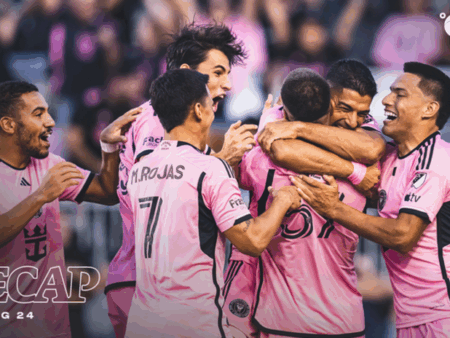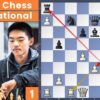Draft day is a confluence of hope, strategy, and a touch of irrational optimism. The pursuit of league glory often begins with identifying those marquee names poised for breakout seasons. However, the truly astute manager understands that avoiding the landmines – those big-name players who unexpectedly underperform or, worse, sit out significant time – is just as critical to securing a championship.
While the allure of a top-tier talent is undeniable, history is replete with cautionary tales of early-round picks that simply failed to deliver. This isn`t about shunning talent; it`s about evaluating risk with a cold, rational eye, preventing a single poor decision from derailing an entire season. Let`s dissect the archetypes of players that often lead to regret.
The Persistent Injury Albatross: When Durability Becomes a Myth
Perhaps the most straightforward principle of strategic avoidance is the “injury-prone” label. Some players, through no fault of their own, seem to have a recurring appointment with the trainer`s room. Their per-game statistics might be phenomenal, a tantalizing siren song, but consistent availability is the bedrock of fantasy value. A player can’t score fantasy points from the bench in street clothes.
This isn`t to say every player with a past injury should be blacklisted. Rather, it`s about acknowledging a pattern. Has a player consistently struggled to hit the 60 or 70-game mark throughout their career? If so, projecting them for a sudden leap to perfect attendance is often a triumph of hope over experience.
Consider a generational talent like Joel Embiid. His dominance when healthy is unquestionable, capable of winning weeks on his own. Yet, his career narrative is punctuated by significant stints on the sidelines. Relying on him to miraculously play 70+ games often means drafting an elite performer who might only deliver elite production for 50 games. The opportunity cost of that high draft pick, spent on a player who is frequently absent, can be crippling.
Similarly, the career of Anthony Davis, another undeniable force, has been a masterclass in high-peak, moderate-duration output. Despite flashes of incredible health, his general trend suggests caution. Drafting such a player demands an understanding that their best-case scenario often involves missing significant time, a stark reality that can swiftly deplete your roster`s weekly output.
Or take Kristaps Porzingis, whose “unicorn” skillset is matched only by his frequent unavailability. His per-game contributions are stellar, but his “games played” column tells a story of consistent load management and injury setbacks. Are you drafting a centerpiece or a designated benchwarmer for half the season?
It`s the ultimate fantasy paradox: a player so good you *want* them, but so fragile you *fear* them. Are you drafting a centerpiece or a designated benchwarmer? Your roster spots are too precious for mere potential.
The Diminished Role or Shifting Sands: When Team Dynamics Cut Value
Even a perfectly healthy player can become a fantasy bust if their role within the team changes dramatically. This can happen for several reasons: a significant offseason acquisition, a coaching change, a shift in team philosophy, or the emergence of younger talent. Minutes, shot attempts, and usage rates are the lifeblood of fantasy production, and any reduction in these can render a player far less valuable than their name recognition suggests.
Take a player like Ivica Zubac, who might have enjoyed a career-best statistical season primarily out of necessity. If his team subsequently brings in a seasoned, high-caliber veteran center – for instance, a player like Brook Lopez – Zubac’s robust minute allocation is almost guaranteed to shrink. Even if he remains efficient, a significant cut from, say, 33 minutes per game down to 25 or 26 will naturally deflate his overall statistical output across the board. The fantasy value is inextricably linked to opportunity, and that opportunity can vanish overnight.
Sometimes, the biggest threat to a player`s fantasy value isn`t an ACL tear, but a new contract for someone else. Be wary of a player`s unsustainable usage metrics.
The Aging Veteran`s Decline & The Tanking Team Conundrum
Age catches up to everyone, even elite athletes. Older veterans, especially those with a history of injuries, become more susceptible to minor ailments that sideline them for extended periods. Their bodies simply don`t recover as quickly, and teams become increasingly cautious with their playing time. This natural decline is further complicated by team strategies, particularly for rebuilding franchises.
A team with no realistic playoff aspirations might prioritize the development of young talent or, more cynically, securing a high draft pick. In such scenarios, star veterans, especially those approaching free agency or with significant contracts, can become “load management” candidates for even the slightest discomfort. What begins as a strategic rest day can quickly evolve into an extended absence or an outright shutdown towards the end of the season, effectively ending their fantasy utility.
Consider the situation of a player like Paul George, a perennial All-Star now in his mid-thirties, potentially coming off offseason surgery, and playing for a team that might be contemplating a rebuild. The confluence of age, recent injury, and the team`s long-term objectives creates a precarious fantasy outlook. Will the team risk their aging asset in meaningless late-season games? History suggests otherwise. An early shutdown or frequent “maintenance days” could dramatically reduce his games played, despite his undeniable talent when on the court.
In essence, drafting such a player means you`re not just betting on their health, but also on their team`s competitive intent – a variable that can shift dramatically over an 82-game season. Nothing says “we`re rebuilding” quite like your star veteran receiving “load management” for a hangnail in March.
Conclusion: The Art of the Astute Draft
Successful fantasy basketball isn`t solely about identifying the next big thing; it`s equally about meticulously avoiding the season-wrecking bust. By applying a discerning eye to injury histories, understanding potential shifts in team roles, and recognizing the broader context of team aspirations, you empower yourself to make more informed draft decisions.
Leave the wishful thinking for the waiver wire. In the early rounds of your draft, prioritize players whose path to consistent, high-level production is clear, rather than those whose potential is perpetually shadowed by `what ifs`. Your championship run starts not just with who you pick, but crucially, with who you wisely choose to avoid.








